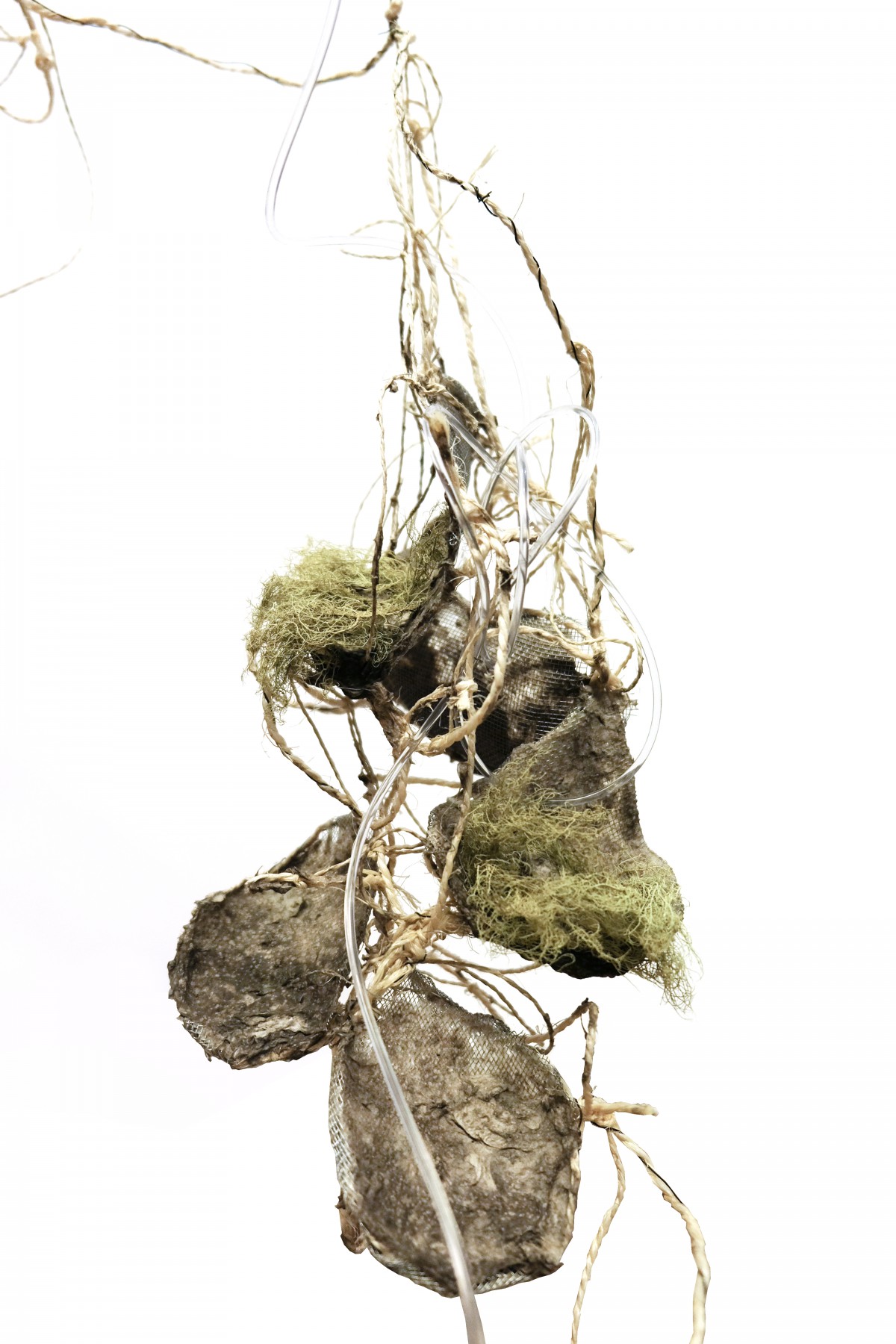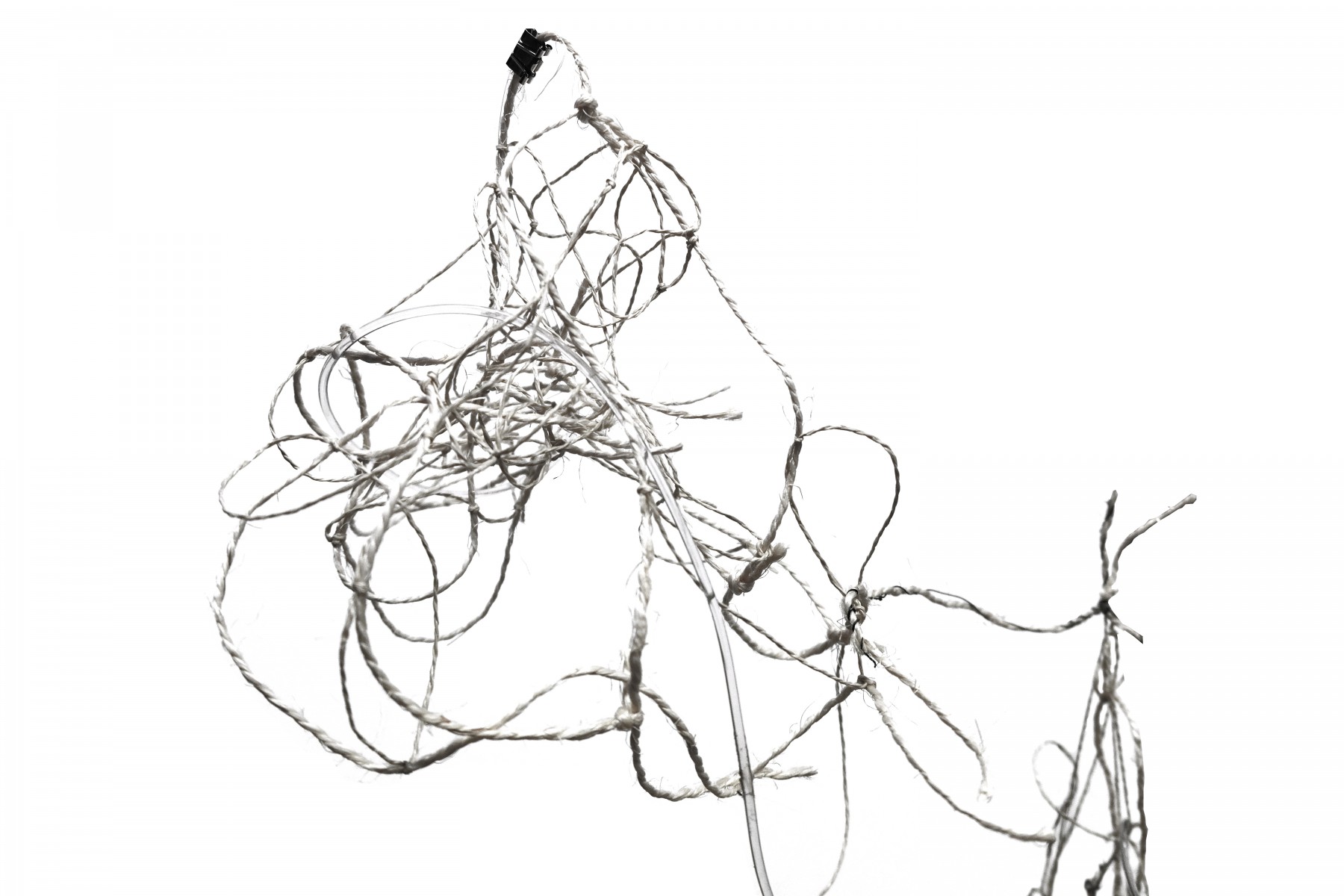SYMBIOCITY
by Felix Künkel
When the demarcation between human beings and nature, between dead and living matter fades away, there is no definite hierarchy anymore. Humanity is no longer the center of the world and nature does not exist as a bare resource.
Symbiocity is meant to be a model of how a city can evolve, when borders between man, nature and technology fall. The design describes a symbiosis of human, technological and natural protagonists. They share a mutual metabolism and create an ecosystem that is interconnected with the ecosystem of the city and the urban infrastructure.
In Vienna, there is a proposal to transform the former Nordwest Bahnhof of Brigittenau into a housing area with 20.000 new inhabitants. The intent was to maintain the industrial structure of the goods station consisting of storehouses, railways and transportation lanes. Above it grows a cell structure, which creates new paths across the area, slowly growing into the different urban structures of the surrounding district of Brigittenau.
While some of the former storehouses are still industrial, others provide space for recreational and cultural purpose. The railways are left to become urban wildernesses. They may be crossed at one’s own risk and are therefore bridged by publically accessible parts of the cell structure. At ground level, the transportation lanes connect the converted spaces to the city. The proposal not only seeks to connect man, nature and technology, but also active social integration.
Symbiocity is realised through cooperation between different social protagonists. The association for symbiotic production of space in which the inhabitants democratically organise themselves is responsible for growth and use of the cell structure. To construct their living environment out of recycled waste the association runs different companies to generate its metabolism. They mainly produce parts of the cells, of the organism’s supporting structure and energy. For example, methane and fertilizer are produced by a biogas plant. The methane is used to carry the cell structure, which is reinforced by fertilised climbing plants. One cell consists of a frame of thick ropes which bear the loads and thinner ropes to provide assistance to the climbing plants. A net serves as a basic floor. Over time, roots, branches and the deposition of soil will grow a stable ground. Each cell is appointed with cables and tubes which provide basic services to its inhabitants. The organism is nerved by a vein system. For the creation of indoor space, each segment is equipped with a bag that can be filled with conditioned air. During several periods of growth, the single cells are assembled by drones.
The urban administration of Vienna is interested in waste disposal, the development of housing and employment. It leases the storehouses to the companies of which it is a shareholder. Cooperation such as this can also occur in matters of research, culture and education. In this way a close network of common interests may develop. In this living environment, individuals are part of a democracy where it is possible for people of different educational and financial backgrounds to interact with each other.
Symbiocity doesn’t mean organise a perfect system. The symbiosis asks the protagonists to permit a certain autonomy for one another. Democracy means conflict and compromise. And thinking of partly autonomous drones reinforcing our cities with plants, if we instruct them to generate ecological diversity and thriving plants, perhaps then sometimes technology will favour fungi instead of us. If our homes are built out of plants we might wake up inside a hedge one day and be forced to gather our belongings and move. But when man connects to his environment and his fellow human beings, they can overcome their alienation and boundaries to mutually create realities that are worth living.

